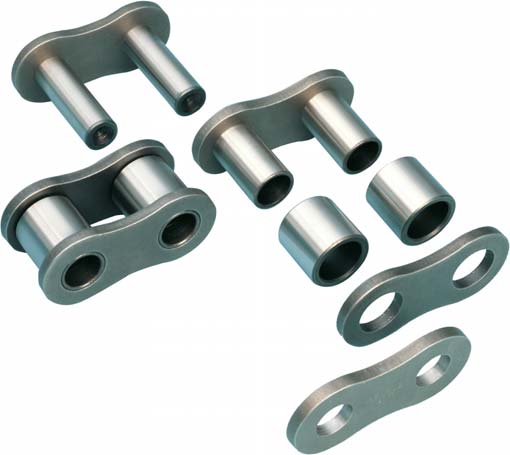Connecting Link – Press Fit (BS/DIN/ANSI)
The typical connecting website link for ANSI series detachable chains, also applied on riveted chains exactly where high  speeds or arduous circumstances are encountered. Supplied with two connecting pins riveted into the outer plate, another outer plate being a press fit onto the pins and secured by split pins soon after assembly. Press fit connecting links can only be employed once; new links must constantly be used to exchange dismantled backlinks.
speeds or arduous circumstances are encountered. Supplied with two connecting pins riveted into the outer plate, another outer plate being a press fit onto the pins and secured by split pins soon after assembly. Press fit connecting links can only be employed once; new links must constantly be used to exchange dismantled backlinks.
Cranked hyperlinks
Apart from the specialized chains in which the cranked link is an crucial layout function, cranked hyperlinks are used only where the chain length have to be an odd variety of pitches. This practice is not really advised; all drives should really, wherever achievable, be built with adequate all round adjustment to make sure the use of an even number of pitches all through the chain. Usually do not USE CRANKED Back links ON IMPULSIVE, Hugely LOADED OR Large Velocity DRIVES.
Cranked Website link – Slip Fit (BS/DIN) Offset Link – Slip Fit (ANSI)
Just one website link with cranked plates pressed onto a bush and roller assemble with the narrow end. A clearance fit connecting pin (No. 128) is fitted on the broad finish and it is secured by a split pin.
Cranked Link Double (BS/DIN) Two Pitch Offset Link (ANSI)
Double cranked back links can be found for many sizes and sorts of chain. The unit consists of an inner hyperlink (No. 4), with cranked links retained permanently in place by a riveted bearing pin. Screw operated extractors break chain by forcing the end softened bearing pins out of the outer hyperlink plates. For other brand names of chain, the rivet swell have to very first be ground away.
